Most gardeners add color to their garden and landscape areas with the use of flowers. However, once you learn how to grow coleus properly, you can use this stunning plant as a great alternative to having only flowers. Let this easy-to-grow plant’s foliage provide beautiful colors to your landscape for a change!
This once staple of Victorian gardens years ago is now a popular choice for all types of garden locations. And don’t worry; Growing coleus is super easy to do.
Coleus is a warm weather-loving, tropical plant that is part of the Mint family. It is grown as a perennial in Zones 10-11 but can be grown as an annual everywhere else. Coleus cannot handle cold temperatures and will be one of the first plants to die due to frost in early Fall.
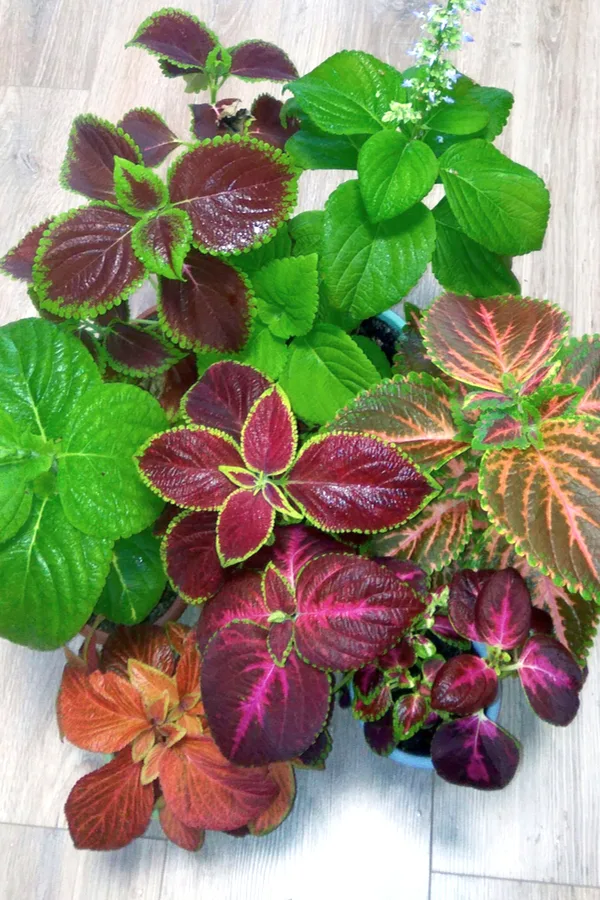
Unlike most flowers, the stunning part of the coleus plant is its foliage. With thin, tender square stems and opposite growing leaves, they are a great plant for adding colorful foliage and interest to your gardening areas, potted containers, hanging baskets, or flowerbeds.
Varieties of Coleus – How To Grow Coleus
There are hundreds of different varieties of coleus that all vary in their leaf textures, patterns, and colors. In addition, new varieties are being created each year that have even more interesting leaf patterns as well as different sun preferences.
Coleus plants typically range in size from 6 inches to 26 inches in height and can be in either upright, rounded, or trailing forms.
Their foliage can range in shades of maroon, purple, red, pink, yellow, or green. Their leaves typically have a leather-like feel and can have a variety of different patterns.
How To Plant, Grow, And Maintain Coleus
Soil Requirements for Coleus
Coleus do well in almost any type of soil as long as it is rich, fertile, and well-draining. Consider amending the soil if you have hard or clay-like soil. Adding in a bit of compost when planting is always beneficial for any soil type. The soil pH should be neutral or just slightly acidic.
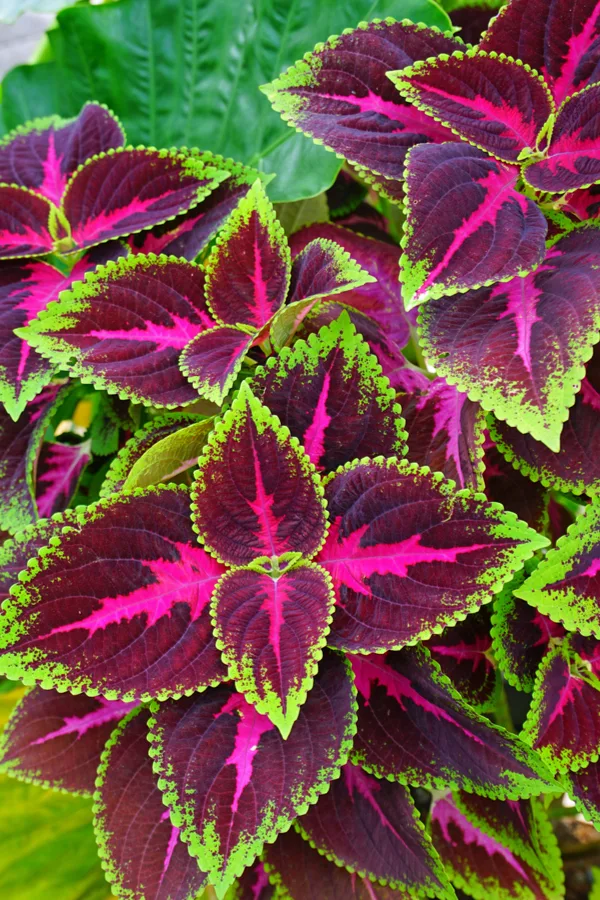
One of the most important aspects when it comes to planting or transplanting coleus is to make sure the soil temperature is warm enough before planting. Wait until soil temperatures reach at least 65 to 70º Fahrenheit (18 to 21º Celsius) before transplanting.
Planting Coleus
Coleus can be grown from either seeds or planted as transplants, but most gardeners prefer to use transplants. You can also easily create new plants by using cuttings. (More on propagating in a little bit.)
Depending on the variety, coleus can either be planted in full shade, partial shade, or even full sun. Most coleus plants, however, require some shade.
Place plants around 8 to 12 inches apart, depending on the kind of look you are going for. The size of the grown plant will depend on the variety you choose and how much pinching you do early on.
Starting Seeds Indoors
If you choose to start your coleus from seeds, you will need to do so 8 to 10 weeks before your Last Spring Frost Date. A great advantage to starting your own seeds indoors is that you can grow different varieties that your local greenhouses or nurseries may not carry.
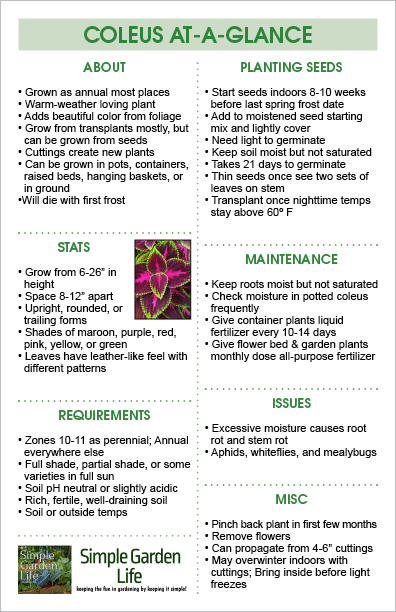
Coleus seeds are tiny, but try to lightly sprinkle the seeds on a tray filled with moistened seed starting soil or potting mix. The seeds need just a light cover of soil since they need light to help them germinate properly. (So don’t forget to turn on your grow lights!)
You may wish to cover the tray with plastic wrap for the first couple of weeks. Remove once seedlings appear. Keep the soil moist but not saturated. Seeds can take up to 21 days to germinate, so be patient.
Once you see two sets of leaves appear on the stems, transplant them into larger pots or thin accordingly. Plant your seedlings outside only after the threat of frost is gone and the outdoor nighttime temperatures stay above 60º Fahrenheit (15º Celsius).
Long-Term Care – How To Grow and Maintain Coleus
Coleus is very quick-growing and will become a mature plant in one growing season. Take care to keep the following tips in mind so you can get the most out of your coleus plants.
Watering
Keeping the roots of a coleus plant properly moist is imperative to the health and growth of the plant. You want the soil to be damp but not saturated or else you might run into issues of root rot.
If you are growing coleus in potted containers or baskets, you will likely need to water the plants daily, if not twice a day in really warm climates. If it feels dry one inch below the soil’s surface, it’s time to water. Also, make sure your containers have holes on the bottom to allow excess water to drain properly.
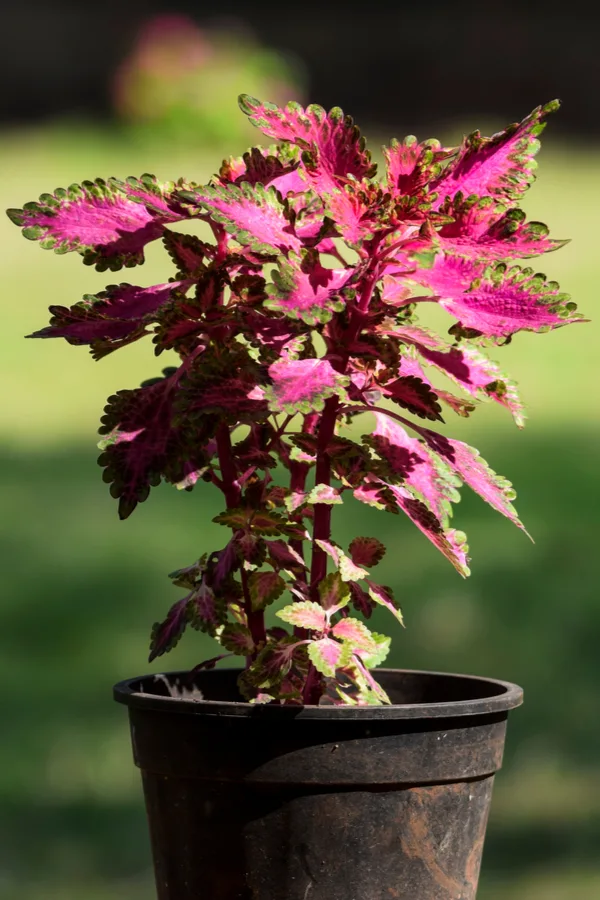
If your coleus is planted in flowerbeds or garden areas, just regularly check the soil moisture to keep it from completely drying out and water as needed.
Fertilizing
Coleus are not heavy feeders, so minimal fertilizing is required. Container plants benefit the most from a little boost of nutrients since they tend to become depleted quicker than plants in the ground soil.
Give container plants a small dose of liquid fertilizer such as Compost Tea every 10 to 14 days for best results. For flowerbed or garden plants, fertilize monthly with an all-purpose, slow-release fertilizer.
Pinching
To help encourage your coleus to have a more dense growth of foliage, you should pinch back the plant in the first few months. Your coleus plant will become tall and leggy without proper pinching.
When your plants are 6 inches tall, begin pinching plants back to a set of leaves by using sharp gardening shears or just your fingernail. Stems of coleus plants are fragile and soft, so they should break off without any issues.
Continue to pinch back every so often. This will ensure a thick, bushier coleus plant.
Flowers
Coleus plants send up tiny stems of blooms as they begin to mature. Most gardeners choose to pinch off the blooms since they aren’t all that attractive and it allows the plant to focus more energy on the beautiful foliage instead.
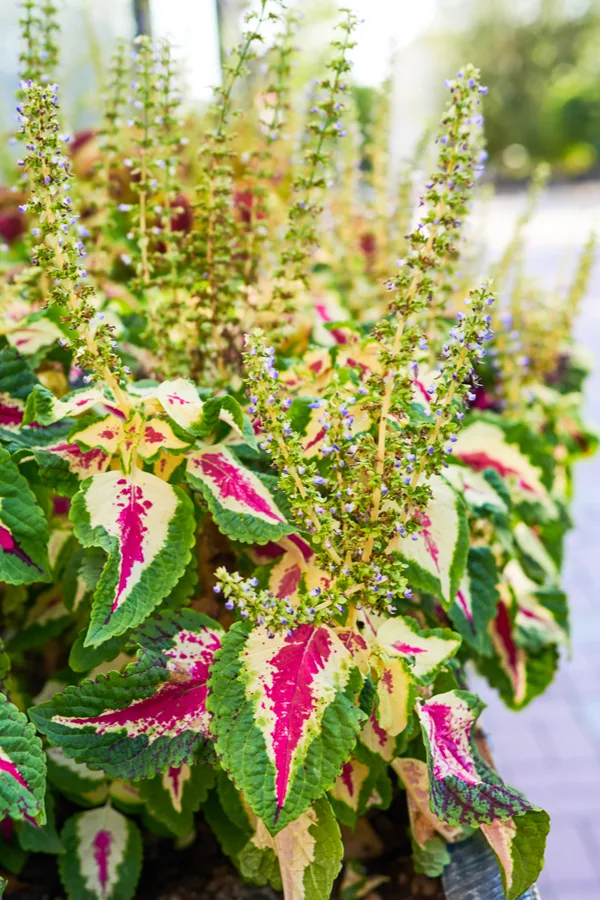
Pests & Issues
The greatest threat to coleus plants is in the form of excessive moisture, causing root and stem rot. If you choose to mulch around coleus plants, keep mulch away from the stems of the plants. Avoid standing water and over watering to prevent the plant’s roots from rotting.
Aphids, whiteflies, and mealybugs tend to be the biggest insect issue for coleus plants.
Propagating Coleus – How To Grow Coleus
As mentioned earlier, you can grow coleus plants by propagating. It’s a great way to add more plants to your property for free!
Simply cut 4 to 6 inches of a mature stem that contains a few leaves. You can even use one of the stems that you pinched off as well. Remove the bottom few leaves, letting the upright top leaves remain. Place into a cup of water or into a potting soil mix. You may add a root toner if you’d like, but it is not needed with coleus plants.
Since coleus plants root easily, you should start to see new roots within a week or two. Transplant the cutting into their final destination following the tips above.
End of Year Care
Coleus will be one of the first plants to die due to light freezes and frost at the end of the growing season in early Fall. You may choose to compost your plants, or you can bring some of your coleus plants inside to live as houseplants until the next year.
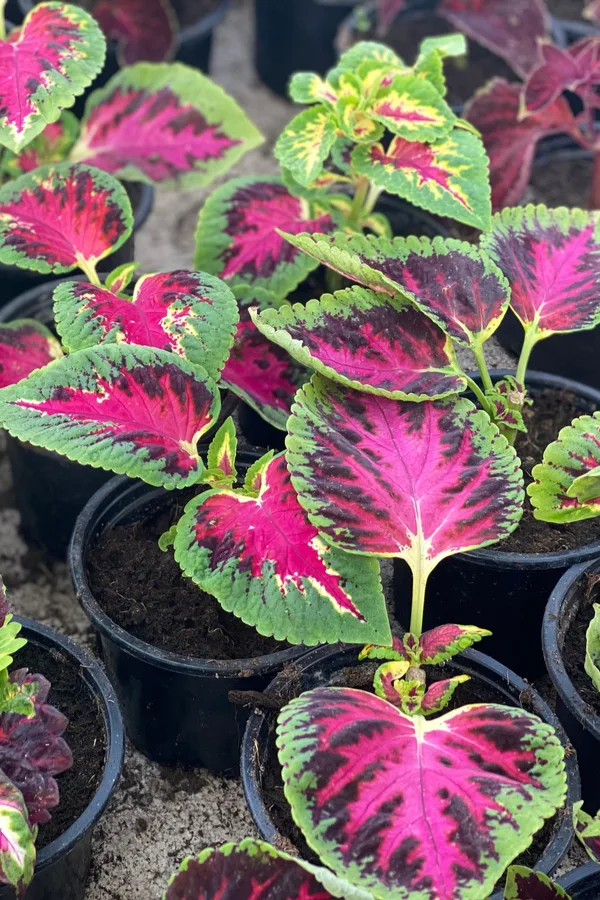
To turn your outdoor coleus plants into houseplants, take a few cuttings off of the healthiest, prettiest, and strongest plants and add them to pots or containers. The indoor plants will need some indirect sun in the warmer months and possibly filtered sun during the winter months.
You can also use a bit of artificial light as well if needed. Just make sure to keep the soil moist while kept indoors.
To Conclude…
Coleus are the perfect way to add a variety of stunning foliage and interest to your garden areas and to your container plants. Between all of the different colors and varieties offered, there is definitely one to match your garden and landscape designs!
Follow Our Facebook Page For Even More Great Tips! Simple Garden Life Facebook Page
Simple Garden Life is a website dedicated to keeping gardening fun, simple and enjoyable! We publish two new articles each week along with a new garden podcast episode every two weeks. This article may contain affiliate links.
Feel free to download, print out, or save our Coleus At-A-Glance sheet. It is sized for half letter printing but can be scaled if needed.
